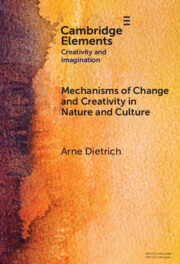Refine search
Actions for selected content:
2 results

Mechanisms of Change and Creativity in Nature and Culture
-
- Published online:
- 03 April 2025
- Print publication:
- 03 April 2025
-
- Element
- Export citation
9 - Capturing the Imagination
- from Part I - Theoretical Perspectives on the Imagination
-
-
- Book:
- The Cambridge Handbook of the Imagination
- Published online:
- 26 May 2020
- Print publication:
- 18 June 2020, pp 132-142
-
- Chapter
- Export citation
